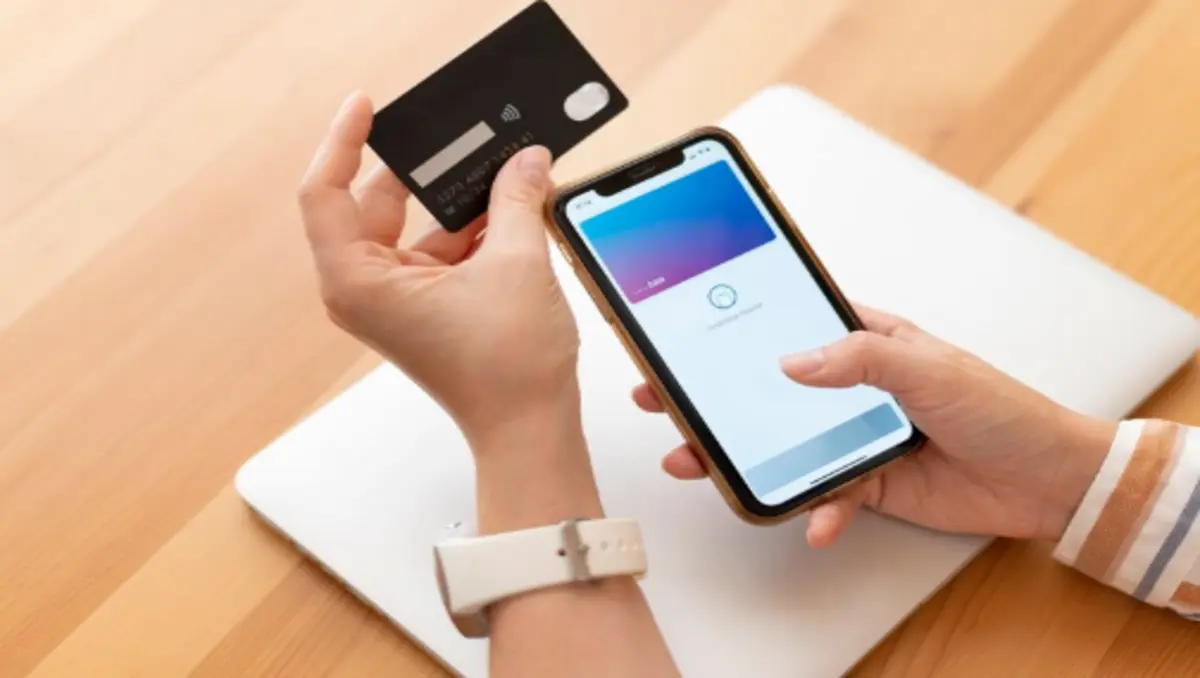In the digital era, mobile banking has revolutionized the way we manage our finances. Whether you’re transferring money, paying bills, or checking your balance, all of this can now be done with just a few taps on your smartphone. While the convenience and accessibility of mobile banking have brought many advantages, there are also a few concerns that users should be aware of. In this blog post, we’ll explore both the positive and negative aspects of mobile banking to give you a balanced perspective.
What is Mobile Banking?
Mobile banking refers to the use of mobile devices such as smartphones or tablets to perform banking activities. This can include anything from transferring money between accounts to managing investments and checking account balances. The technology enables users to access their bank accounts anytime and anywhere, making financial management more efficient.
With mobile banking apps, you don’t need to visit a bank or use an ATM to conduct simple transactions. As long as you have an internet connection, you can access a wide range of banking services at your fingertips.
The Pros of Mobile Banking
1. Convenience and Accessibility
One of the biggest advantages of mobile banking is the convenience it offers. You can access your bank account 24/7, whether you’re at home, in the office, or traveling. Need to check your balance before making a purchase? With mobile banking, you can do this in seconds without having to go to an ATM or bank branch.
Additionally, many banks now offer mobile apps with user-friendly interfaces that make transactions quick and easy. Whether you’re making payments, transferring money, or managing investments, everything can be done from your mobile device.
2. Fast Transactions
Mobile banking allows users to make transactions in real time. Whether it’s transferring money to someone, paying bills, or setting up automatic payments, transactions are processed immediately or within a very short time frame. This is much faster than the traditional method of writing checks or waiting in line at a bank.
3. Reduced Physical Visits to Banks
With mobile banking, you no longer need to visit the bank for routine transactions. This not only saves time but also reduces the effort of having to travel to the bank. For people living in remote areas, this can be a game-changer, as they can perform banking activities without having to leave their homes.
4. Better Financial Management
Mobile banking apps often come with budgeting tools, reminders, and alerts that help users manage their finances better. Whether it’s setting up a budget or getting notifications when a bill is due, these features ensure you stay on top of your financial obligations and avoid unnecessary fees.
Many apps also offer spending analysis tools, which break down your transactions into categories, helping you understand where your money is going. This can help you make informed financial decisions.

5. Enhanced Security Features
Although security concerns have been raised in relation to mobile banking, banks have responded by implementing advanced security features to protect users’ data and transactions. Features like biometric authentication (face recognition or fingerprints) and two-factor authentication (2FA) add an extra layer of protection to prevent unauthorized access.
6. Lower Transaction Costs
For many types of transactions, mobile banking can save you money. Bank fees for wire transfers and international money transfers can be significantly lower when done via mobile banking apps. Some banks even offer free transfers between accounts, which can add up over time.
The Cons of Mobile Banking
1. Security Risks and Fraud
Despite the security features offered by banks, mobile banking can still be vulnerable to fraud and cybercrime. Hackers may target individuals or even banking apps, looking for ways to steal sensitive data such as passwords, PINs, and account numbers.
Users who don’t take proper precautions, such as keeping their mobile devices secure and avoiding suspicious apps, are at risk of becoming victims of identity theft or financial fraud. Phishing scams, where attackers impersonate banks to trick users into revealing personal information, are also a growing concern.
2. Dependency on Internet Connectivity
Another downside of mobile banking is that it heavily depends on a stable internet connection. If you are in an area with poor or no internet access, you may not be able to access your account or perform any transactions. This can be frustrating, especially when you’re in urgent need of accessing your funds or making a transfer.
3. Limited Features Compared to In-Branch Services
While mobile banking apps are continuously evolving, there are still certain limitations. Some complex banking services or issues may require in-person interaction with bank representatives. For instance, if you need to open a business account, negotiate a loan, or resolve a technical issue, mobile banking apps may not be sufficient.
Additionally, some users may find mobile banking apps limiting in terms of the services they can access. Not all features available at physical branches are offered in mobile apps, particularly with smaller banks or financial institutions.
4. Battery and Device Issues
Since mobile banking relies on your phone or tablet, users are dependent on the battery life of their devices. If your battery runs out, you may not be able to complete an urgent transaction. In addition, mobile devices are prone to damage, which can prevent you from accessing your banking app if your device is broken or malfunctioning.
5. Potential for Over Spending
While mobile banking apps provide excellent tools for financial management, they can also tempt users into overspending. With the convenience of mobile banking, it becomes easy to make impulse purchases or transfer money without giving it much thought. This can lead to budget overspending or financial difficulties if not carefully monitored.
Moreover, apps that encourage instant payments or offer one-click purchasing can make it harder for individuals to resist the temptation to spend. This is especially true for users who lack financial discipline or struggle with impulse control.
6. Data Privacy Concerns
Even though banks take great care to protect your data, the reality is that storing sensitive financial information online always comes with some level of risk. If a banking app suffers a data breach or gets hacked, your personal details, such as your bank account numbers, transactions, and passwords, could potentially be exposed.
Additionally, banks may collect data about your spending habits for analytics purposes. While this is often used to improve services, it can raise concerns about the privacy of your personal and financial information.
How to Stay Safe While Using Mobile Banking
While mobile banking has its risks, there are steps you can take to ensure your security:
- Use Strong Passwords: Always set a strong password for your banking app and change it regularly. Avoid using easily guessable passwords like birthdates or names.
- Enable Two-Factor Authentication (2FA): Turn on two-factor authentication for an extra layer of security. This means that even if someone gets hold of your password, they would still need to pass an additional security check.
- Keep Your Device Secure: Install antivirus software and ensure your phone is protected with a strong PIN or fingerprint lock.
- Avoid Public Wi-Fi: Never conduct banking transactions over unsecured public Wi-Fi networks, as they can be easily intercepted by hackers.
- Update Your Apps Regularly: Make sure your mobile banking app and device operating system are always up to date. This helps protect you from security vulnerabilities.

Conclusion
Mobile banking has undoubtedly made managing finances more convenient, accessible, and efficient. It allows users to carry out a variety of banking activities from the comfort of their homes, making it an essential tool for today’s digital age. However, the risks associated with mobile banking, such as fraud, security breaches, and over spending, cannot be ignored.
related post
https://financekhush.com/how-to-build-a-culture-of-compliance-in-2025/
To make the most out of mobile banking, it’s crucial to take the necessary precautions to protect your personal information and monitor your spending habits. As long as you stay informed and use the available security features, mobile banking can be a powerful tool for managing your finances.
Faq’s
1. What is mobile banking?
Mobile banking is the use of your smartphone or tablet to access your bank account and perform financial transactions. Through a mobile banking app, you can check your account balance, transfer funds, pay bills, and even invest, all from the convenience of your mobile device. It’s a fast, efficient, and secure way to manage your finances without needing to visit a bank branch.
2. Is mobile banking safe?
Mobile banking is generally safe, but like any online activity, it comes with risks. Banks have implemented strong security measures, such as encryption, biometric authentication (face recognition or fingerprint scanning), and two-factor authentication (2FA), to protect users. However, your personal safety also depends on how careful you are with your device. Always ensure your phone is secured with a password or biometric lock, avoid using public Wi-Fi for transactions, and update your banking app regularly for added security. If you follow best practices, the risks are minimal.
3. What are the benefits of using mobile banking?
There are several benefits to mobile banking, including:
- Convenience: You can access your bank account 24/7 from anywhere, without needing to visit a bank branch.
- Fast transactions: Mobile banking allows you to make instant money transfers and payments, saving time compared to traditional methods.
- Easy account management: You can easily track your spending, set up alerts, and manage investments, making it simpler to stay on top of your finances.
- Cost-effective: Many mobile banking services, such as transfers between your own accounts, are free, while other banking fees may be reduced compared to in-branch services.
4. Can I deposit checks using mobile banking?
Yes, most banks now allow you to deposit checks remotely using mobile banking apps. This process is called mobile check deposit. To do this, you simply need to take a photo of the front and back of the check and submit it through your bank’s app. Your bank will process the check as if you were depositing it in person. While mobile check deposit is convenient, there are typically limits on the amount you can deposit through this method, and it may take a few days for the funds to become available.
5. What happens if my phone is lost or stolen?
If your phone is lost or stolen, you should immediately contact your bank to suspend access to your mobile banking account. Most banks offer a “remote lock” feature or can help you freeze your account to prevent unauthorized transactions. It’s also important to change your password and enable two-factor authentication (2FA) to prevent future access. In addition, you should report the theft to your mobile carrier and consider remotely wiping your phone if it supports such a feature.https://financeforu.com/
6. What should I do if I notice an unauthorized transaction?
If you notice an unauthorized transaction in your mobile banking app, immediately contact your bank’s customer service team. Most banks have a process for reporting fraud, and they will typically investigate the issue. It’s important to act quickly to resolve the problem and ensure you are not liable for any fraudulent charges. In the meantime, check your account settings to ensure your security features, like passwords and 2FA, are up to date.https://financekhush.com/

1 thought on “Mobile Banking: A Comprehensive Guide on Its Pros and Cons 2025”